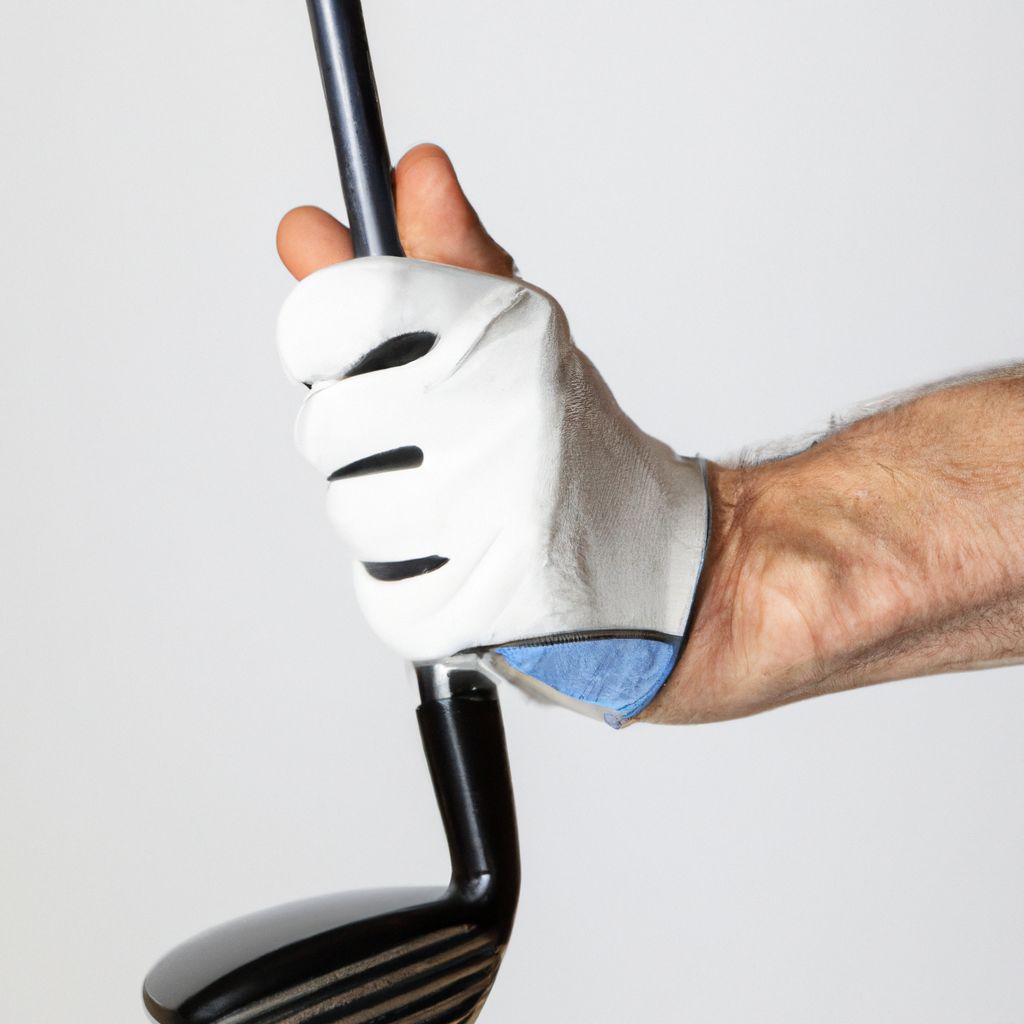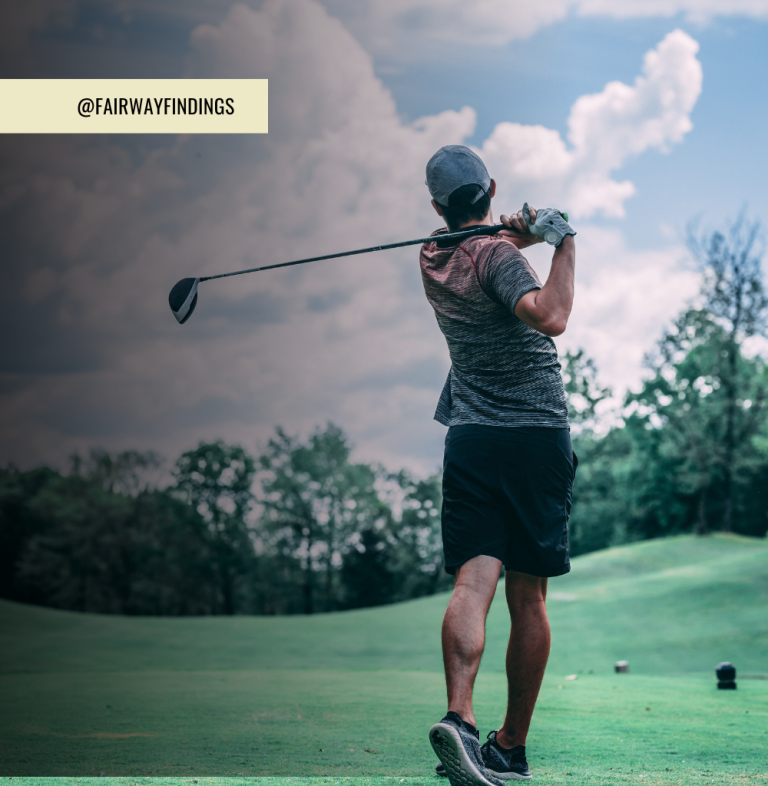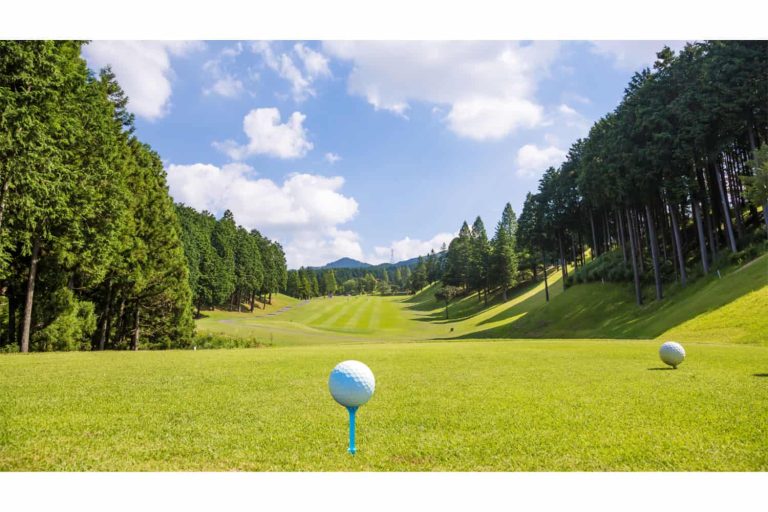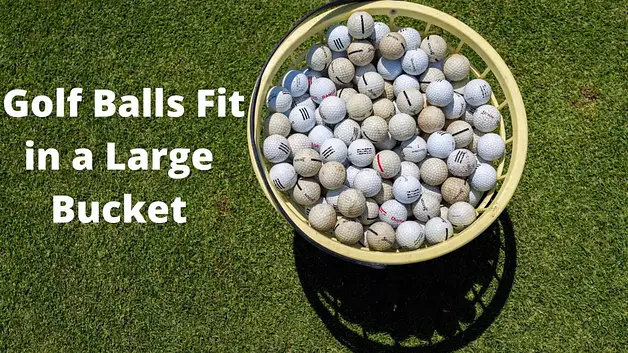Mastering the Basics: The Essential Guide to How to grip a golf club
Key takeaway:
- A correct golf grip is crucial for an effective swing and ball striking. It plays a significant role in the overall performance of a golfer.
- Bad grip habits can have a negative impact on the golfer’s game. Regular evaluation of grip technique is necessary to ensure optimal performance.
- Grip size and hand positioning are important factors to consider. Proper hand positioning for both the left and right hand is essential for a stable and consistent grip.
Importance of a Proper Golf Grip
Gripping a golf club correctly is key to success in the game. It can help with accuracy, control, and power in your swing. It is important to understand how to grip a golf club. It impacts your swing in various ways, such as clubface alignment, shot consistency, and power generated.
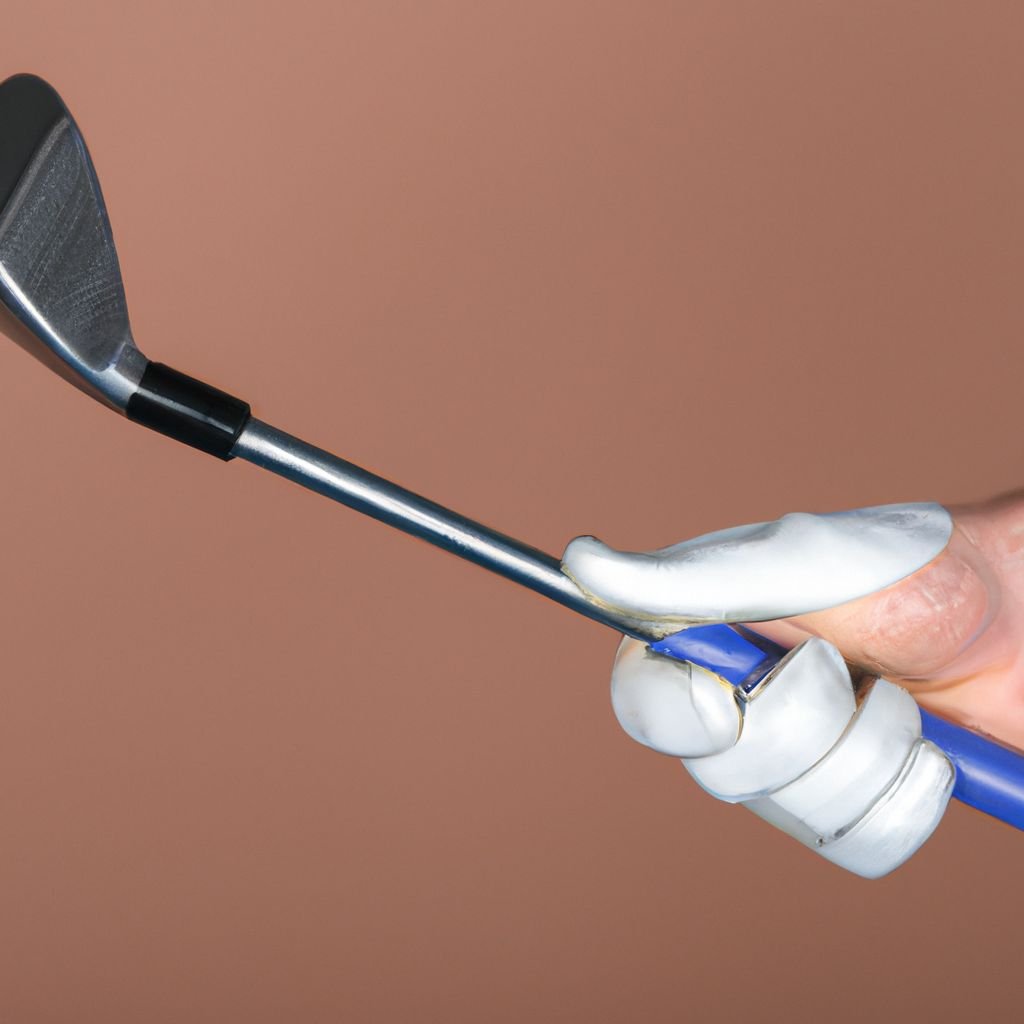
There are three types of grips: overlapping, interlocking, and baseball. Each one has its own advantages and disadvantages. Finding the one that suits your playing style is crucial. It also suggests the right balance of grip pressure to maximize your swing potential.
Hand positioning is important too. The top hand should be diagonally across the fingers. The bottom hand should be aligned with the knuckles. This helps with better control and a consistent, repeatable swing.
An example of the impact of a proper golf grip is a novice golfer who struggled with accuracy and distance. But after learning about the importance of a proper grip and practicing it, their game was transformed. They hit shots with better precision and increased distance.
In summary, mastering the art of gripping a golf club is key for any golfer aiming to enhance their performance on the course. Investing time to understand different grips, grip pressure, and hand positioning will improve accuracy, control, and the overall game.
Techniques and Methods for Holding the Golf Club
Golfing relies heavily on grip techniques. To improve your overall game, it’s essential to understand the proper grip. This gives you control and accuracy in your shots.
There are three main grip types: overlapping, interlocking, and baseball. Each has its benefits and drawbacks, so experiment to find what works for you.
Hand placement is important too. It affects your shot’s trajectory and accuracy. Place your hands right, and you’ll have a solid connection between the club and yourself.
Grip pressure is also key. Balance between tight and loose is ideal for control and power. Keeping your grip relaxed but firm will help you stay in control and generate more power.
For extra help, there are grip aids like gloves and tapes. Also, regularly check your grips for wear and tear. Keeping them in good condition makes sure you have a secure hold.
Tiger Woods’ story is a good reminder of how grip individuality matters. He used an unusual 10-finger grip, initially met with skepticism. However, he went on to great success with it. This proves that you don’t need to conform to one style. Find the grip that works best for you and your game.
Common Grip Styles and Pressure
Golfers have numerous options when selecting a grip style. The correct grip style and pressure can ensure proper control and stability during the swing.
There are three primary grip styles: the interlocking grip, the overlapping (or Vardon) grip, and the baseball (or ten-finger) grip.
- Interlocking Grip: Ideal for players with smaller hands or less hand strength. It involves interlocking the pinkie finger of the trailing hand with the index finger of the lead hand.
- Overlapping Grip: Common among professional golfers, this grip involves placing the pinkie finger of the trailing hand between the index and middle fingers of the lead hand.
- Baseball Grip (ten finger grip): This grip is often used by beginners and is the most natural way to hold a club. All fingers are on the club, similar to holding a baseball bat.
The overlapping grip involves placing the trailing hand’s little finger over the lead hand’s index finger. The interlocking grip involves intertwining the trailing hand’s pinky finger with the lead hand’s index finger.
Pressure is also essential – it should be firm, but not too tight. Squeezing the club too tightly can cause tension and hinder the swing’s fluidity. Holding the club too loosely can result in a loss of power and control. Personal preferences may vary. Different grip styles and pressure may work better for different golfers, depending on hand size, strength, and comfort.
To improve your golf performance, practice and master the correct grip styles and pressure. Experiment with the overlapping and interlocking grip to find the best fit. Also find the right amount of pressure. If you do, you can boost accuracy, power, and overall performance on the golf course. Don’t miss out on the chance to improve your game with proper grip techniques.
Tips and Techniques for Finding Your Perfect Golf Grip
Golf success requires a proper grip. It affects accuracy, power, and swing control. Here are tips to help improve it:
- Firstly, get your hands in the right spot. With right-handed golfers, the left hand should be in a neutral position, thumb on top of the grip. Wrap fingers around the club and make a secure connection. Then, put the right hand below the left one, thumb slightly to the right of center. Interlock or overlap the right pinky finger with the left index finger for stability.
- Secondly, hold the club lightly but firmly. Too tight a grip restricts natural movement. Too loose and power and accuracy suffer. Find a balance between the two.
- Thirdly, line up your hands and wrists. Your hands should be aligned with your forearms, creating a straight line. This maximizes energy transfer from your body to the club.
Variations in grip can occur due to hand size, flexibility, and preference. Consulting a golf instructor or professional can help you optimize your grip.
Ben Hogan, a golf legend, is an inspiring example of grip commitment. After a serious car accident, Hogan made a remarkable recovery. He won numerous tournaments and majors, thanks in part to perfecting his grip technique. He believed it was the basis for a solid golf swing.
Steps to Grip a Golf Club Correctly
Step 1: Lead Hand Placement
- Begin with your lead hand (the left hand for a right-handed golfer and vice versa). Hold the club at an angle in front of you, using your other hand.
- Place the lead hand on the club so that the grip runs diagonally from the base of the pinkie to the middle of the index finger.
- Wrap your fingers around the club, leaving the thumb slightly to the right of the center of the grip (for right-handers).
Step 2: Trailing Hand Position
- Place your trailing hand on the club so that the grip runs from the base of the fingers to the pad of the hand.
- Depending on your chosen grip style, either interlock, overlap, or place all fingers on the club.
- The thumb of the lead hand should fit in the lifeline of the trailing hand.
Step 3: Check Your Grip Pressure
- Grip pressure is crucial. Hold the club firmly but not too tightly. Imagine holding a tube of toothpaste without squeezing any out.
Step 4: Alignment of Hands
- Ensure that both hands work as a unit. The ‘V’s formed by the thumb and index finger of each hand should point towards your trailing shoulder.
Additional Considerations and Expert Insights
Grasping a golf club properly requires knowledge of multiple important elements. Insights from experts provide valuable info and advice for golfers to improve technique and perform better.
Grip pressure is one aspect to consider. Pros suggest keeping it consistent and relaxed throughout the swing. Holding too tightly can cause tension and impair the swing. But, too loose grips can lead to lack of control. The perfect balance between these two extremes is key for a successful grip.
The positioning of the hands is another essential factor. The ideal way to hold the club (for right-handed golfers) is with the left hand diagonally placed across the base of the fingers. The right hand should be underneath the left, with pinky overlapping the gap between left index and middle finger. This overlapping grip, called the “Vardon grip,” offers stability and control in the swing.
Additionally, the size of the grip can influence the golfer’s ability to maintain a good grip. Grips that are too small or large may produce extra wrist motion or difficulty in releasing the club. It is essential to find the right size for individual’s hand and preferences, to get optimal control and comfort in the swing.
The success of professional golfer Tiger Woods is an example of the importance of proper grip. Despite being very talented, Woods experienced a period of struggle in his golf game. By consulting experts and changing his grip technique, he regained form and became a champion. This story shows the crucial role of a correct grip in a golfer’s performance.
Overall, understanding the elements of how to grip a golf club is critical for golfers seeking to advance their game. Pay attention to grip pressure, hand positioning, and grip size. With these insights, golfers can better their control, consistency, and overall performance on the course.
Conclusion and Taking Your Game to the Next Level
The grip of a golf club is key for upping your game. A correct grip lets you take control, hit more accurately, and get more distance. By looking at the reference data on how to grip it, you can enhance your performance and reach a satisfying result.
Pay attention to your hands and fingers when you grip. The data explains the proper technique – the club in the fingers, not the palm. This makes a more stable connection between the club and your body, making for a smoother swing and better shots.
To take your game to the next level, loosen up your grip pressure. Tension in your hands and forearms can mess up your swing and lower the power of your shots. By keeping your grip relaxed, you can get more clubhead speed and improve on the course, reaching your goal.
Some Facts About How To Grip a Golf Club:
- ✅ A proper golf grip is essential for effective swing and improved golf ball striking. (Source: Golf Workout Program)
- ✅ Hand positioning is crucial, with the weaker hand picking up the club first. (Source: Golf Monthly)
- ✅ The most common method of finger linking is the Vardon Grip or Overlapping Grip. (Source: Golf Workout Program)
- ✅ Grip pressure should be firm but not too tight to avoid inconsistent strikes. (Source: Golf Monthly)
- ✅ There are different types of grips, and alternative grips can be used if they feel natural and produce results. (Source: Golf Workout Program)
FAQs about How To Grip A Golf Club
How do I grip a golf club properly?
A proper grip is essential for a successful golf swing. Start by placing your left hand on the club, with a neutral golf grip, two knuckles visible, and the index finger and thumb pointing towards your right shoulder. Then, position your right hand on top of the left hand, with the right thumb on top of the left thumb. Experiment with different grip sizes to find the one that suits your hand size. Using grip trainers and marker pens on your glove can also help ensure consistent grip placement.
What are the different types of golf grips?
There are three main types of golf grips: the Vardon Overlap Grip, the Interlocking Grip, and the 10 Finger Grip. The Vardon Overlap Grip is the most popular grip, with the right pinky finger placed between the index and middle fingers of the left hand. The Interlocking Grip is used by players like Jack Nicklaus and Tiger Woods, with the right pinky interlocked between the left index and middle fingers. The 10 Finger Grip, also known as the Baseball Grip, involves placing the left hand at the end of the club and the right hand just below the left hand.
What is a neutral grip and why is it important?
A neutral grip is a standard grip that allows for a square clubface and a straight ball flight. It is achieved by positioning the left hand on the club with two knuckles visible and the index finger and thumb pointing towards the right shoulder. The neutral grip helps to ensure consistent and accurate shots. A weak golf grip can lead to undesirable shot shapes like fades or hooks.
Does grip pressure matter when holding a golf club?
Yes, grip pressure plays a significant role in the golf swing. It is recommended to have a firm but not too tight grip on the club. Gripping too tightly can restrict wrist movement, prevent a full shoulder turn, and result in inconsistent strikes. On a scale of 1 to 10, with 10 being the tightest, a grip pressure of around 5/10 is ideal.
Can I customize my grip based on my hand size and personal preference?
Yes, you can customize your grip based on your hand size and personal preference. Grips come in different sizes, so choose one that comfortably fits your hand. Additionally, some golfers may find alternative grips or adjustments that feel more natural and produce better results. Experimenting with different grips can help you find the one that works best for you.
How can I maintain and clean my golf grips?
Maintaining and cleaning your golf grips is important for maintaining tackiness and preventing hand slippage. You can clean your grips using a cloth wetted with a mixture of water and mild detergent or by using a soft-bristle brush dipped in warm soapy water. Regular cleaning will help prolong the lifespan of your grips and ensure consistent performance.
